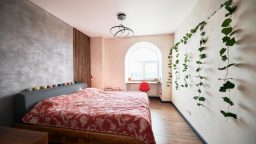A rug can completely transform the look and feel of a room. Whether you’re adding warmth to a cold floor, grounding a space, or simply adding a pop of colour and texture, choosing the right rug can elevate the entire room. With so many types, materials, and sizes available, it can be overwhelming to find the perfect one for your home. However, understanding a few key considerations can help you select a rug that suits your style, functionality, and space. Here’s a simple guide to help you choose the perfect rug for your home.
- Consider the Size of the Room
The size of your rug is crucial to its effectiveness in the space. A rug that’s too small can make the room feel disconnected or unfinished, while one that’s too large can overwhelm the space or obstruct flow. Here are some tips on selecting the right size rug for your room:
- Living Room: In a living room, your rug should fit under all the main pieces of furniture, such as the sofa and coffee table. Ideally, all furniture should sit on the rug, or at least the front legs of the seating should rest on it. A standard size for most living rooms is 8×10 feet, but this can vary based on your furniture layout and room size.
- Dining Room: For the dining area, choose a rug that’s large enough to accommodate the table and chairs, even when the chairs are pulled out. A rug size of 9×12 feet is often ideal for a standard dining table, but if you have a larger table, you may need a bigger size.
- Bedroom: In a bedroom, the rug should either cover the area beneath the bed or be placed on each side of the bed. A common size is a 5×8 feet rug under the bed, but if your room allows, a larger rug can create a more luxurious look.
- Entryway: For smaller areas like entryways or hallways, a smaller rug such as a runner (2×6 feet or 3×8 feet) works best. Make sure the rug is long enough to cover the high-traffic path without being too large for the space.
Make sure to measure your room and furniture before purchasing a rug to ensure it fits well and complements your layout.
- Choose the Right Material
Rug materials vary greatly in terms of texture, durability, and maintenance. The right material depends on the room’s usage and your personal preferences. Here’s a breakdown of popular rug materials and their best uses:
- Wool: Wool rugs are soft, durable, and naturally stain-resistant. They’re a great choice for high-traffic areas like living rooms or hallways. Wool is also a good option for those looking for a long-lasting, high-quality rug that will age well.
- Cotton: Cotton rugs are lightweight, easy to clean, and perfect for adding a casual touch to a space. They work well in bedrooms, bathrooms, or kitchens. Keep in mind that cotton rugs can wear out faster than wool, so they may not be the best choice for high-traffic areas.
- Silk: Silk rugs are luxurious, with a soft and glossy texture. They offer a refined look and are often used in more formal or decorative spaces. However, they are delicate and may require professional cleaning, so they’re not ideal for high-traffic areas.
- Synthetic Fibres (Polyester, Polypropylene, Nylon): Synthetic rugs are affordable, durable, and come in a wide range of styles and colours. They’re also stain-resistant and easy to clean, making them ideal for high-traffic areas or homes with pets and children.
- Jute and Sisal: These natural fibres give a rustic, organic look to a room. They’re durable and work well in casual spaces, but they can be rough underfoot and may require regular cleaning to keep them looking their best.
Think about where the rug will be placed and how much foot traffic it will receive. If it’s in a high-traffic area, choose a durable and easy-to-clean material like wool or synthetic fibres. For a softer, luxurious feel, go for silk or wool.
- Understand the Pile Height
Pile height refers to how tall or thick the fibres of the rug are, and it affects both the look and the feel of the rug. The pile height can range from low to high, and each has its own benefits:
- Low Pile: Low-pile rugs have shorter fibres and are easy to clean, making them great for high-traffic areas. They’re also less likely to show wear and tear over time. This makes them ideal for living rooms, dining rooms, and hallways. Low-pile rugs provide a more streamlined, modern look.
- Medium Pile: Medium-pile rugs provide a balance between comfort and practicality. They are soft underfoot but still easy to vacuum and maintain. They work well in living rooms and bedrooms, where comfort is important but cleaning is still manageable.
- High Pile (Shag Rugs): High-pile or shag rugs are plush and soft, creating a luxurious feel underfoot. They’re great for creating a cosy atmosphere, but they can be harder to clean and are not ideal for areas with heavy foot traffic. These are best placed in bedrooms, reading corners, or low-traffic spaces.
Consider your lifestyle and the function of the room when choosing the pile height. If you have children or pets, a low to medium pile is often the most practical.
- Think About Rug Design and Colour
The design and colour of your rug can tie the room together and set the tone for the entire space. When choosing a rug design, consider the existing colour scheme and style of the room.
- Neutral Colours: Neutral rugs, such as beige, grey, or ivory, work well in most rooms and can blend with any décor. They’re versatile and can easily complement furniture and other design elements in the room.
- Bold Colours and Patterns: If you want the rug to be a focal point, go for bold colours or intricate patterns. Rugs with vibrant hues or geometric patterns can inject energy and personality into a space. Just make sure the colours and patterns complement your furniture and the rest of your décor.
- Traditional vs. Modern: Traditional rugs often feature intricate designs, Persian motifs, or floral patterns, which work well in classic, formal spaces. Modern rugs, on the other hand, tend to have clean lines, minimalistic patterns, or abstract designs that suit contemporary interiors.
Choosing the right design and colour can enhance the aesthetics of your space, so pick a rug that aligns with your personal style and complements the room’s existing décor.
- Consider the Function of the Room
The function of the room where the rug will be placed should influence your rug choice. A rug in a living room will likely see more foot traffic than one in a bedroom or hallway, so consider how the rug will hold up over time.
- High-Traffic Areas: For spaces like living rooms, dining rooms, and hallways, choose a durable, easy-to-clean rug made from materials like wool, cotton, or synthetic fibres. A low-pile rug will also help with maintenance.
- Low-Traffic Areas: For bedrooms or other quieter spaces, you can indulge in a more luxurious rug like a high-pile wool or silk rug. These rugs are soft underfoot and add a sense of comfort and elegance to a more relaxed environment.
- Pet-Friendly Rugs: If you have pets, choose a rug that’s durable and easy to clean. Synthetic fibres like polypropylene or polyester are ideal, as they resist stains and pet hair. Avoid rugs with long piles, as they can trap dirt and pet hair.
- Maintain Your Rug
Proper care and maintenance can extend the life of your rug and keep it looking great for years. Regular vacuuming is essential, and depending on the material, you may need to have your rug professionally cleaned every year or two. For spills, always clean them immediately to prevent staining. For high-pile rugs, occasional fluffing can help maintain their softness and structure.
Conclusion
Choosing the perfect rug for your home is all about considering size, material, pile height, and design. Whether you’re looking for a subtle piece to complement your room or a statement rug to act as the focal point, understanding these key elements will help you make the right choice. With the right rug, you can add comfort, warmth, and style to any room in your home. Take your time, consider your needs, and enjoy the process of finding the perfect rug to complete your space!





